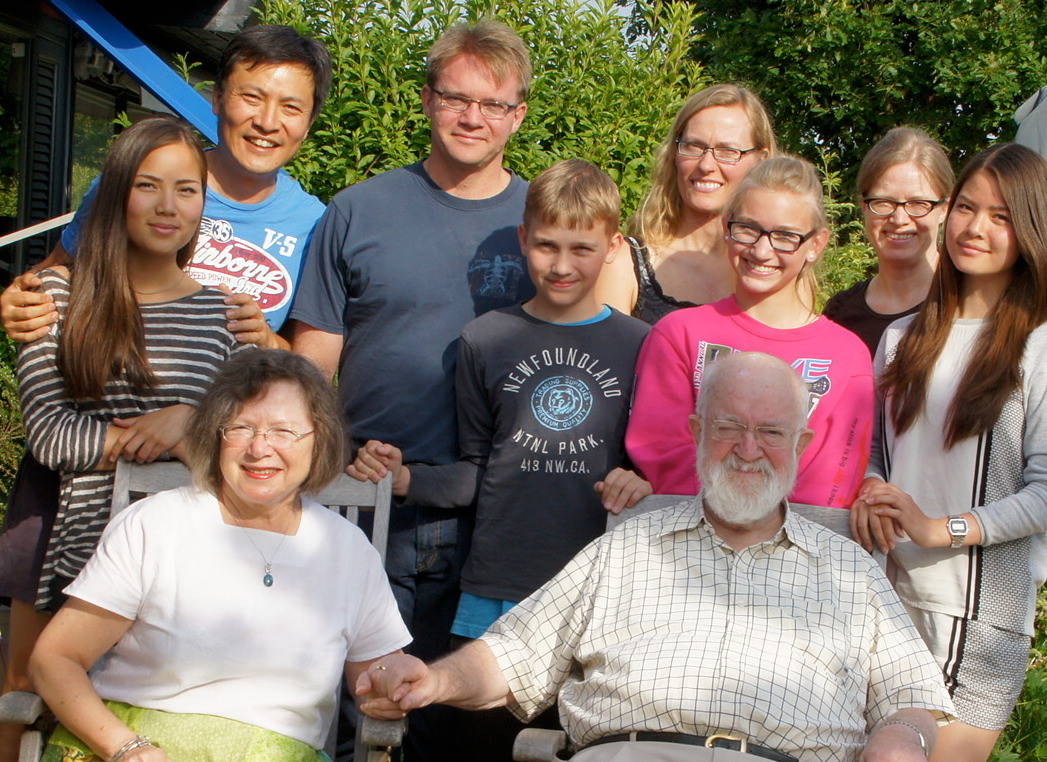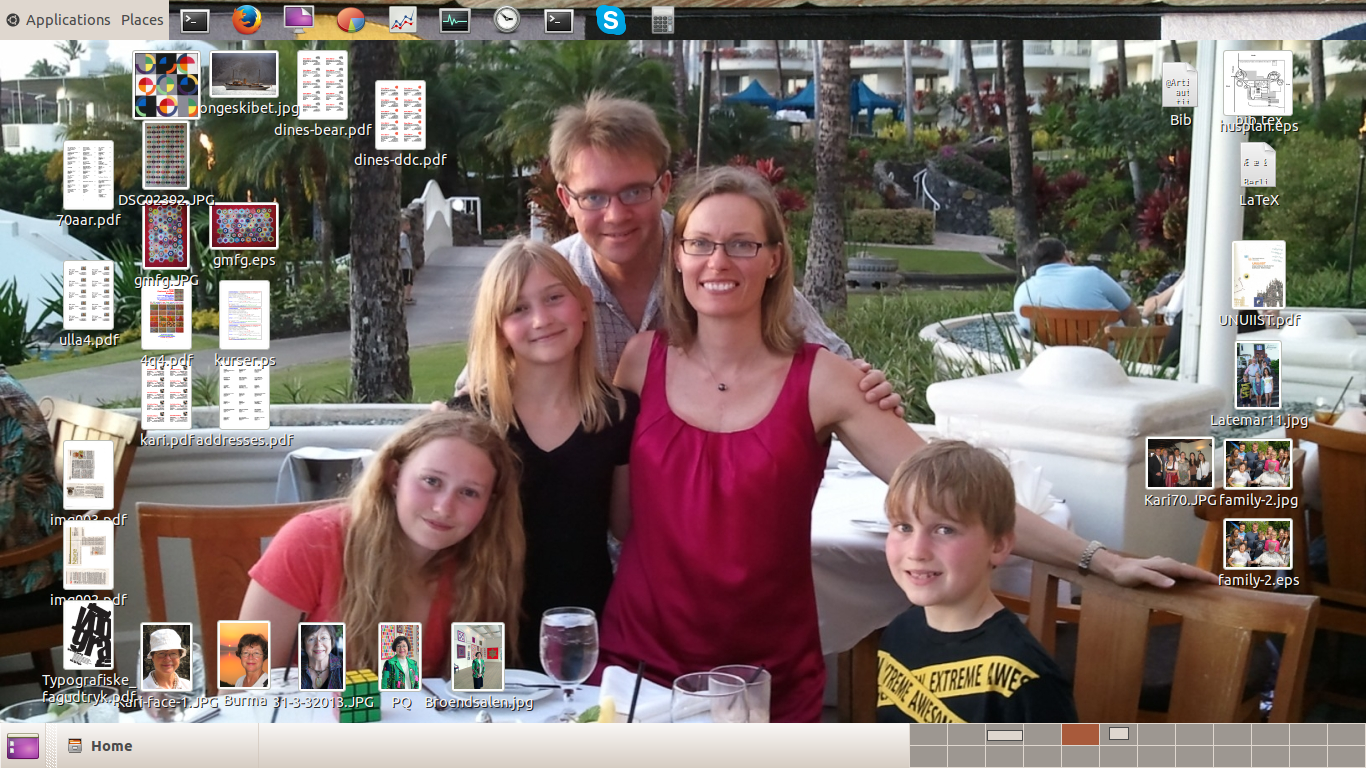The Triptych of Software Engineering
A Comprehensive Approach
An Advanced MSc + PhD Course Proposal
Dines
Bjørner
Fredsvej 11, DK-2840
Holte,
Denmark [Techn.Univ. of Denmark]
Compiled: January 15, 2017
Reference is made to: Domain Science & Engineering .
My writings, [1-6], do not represent "beaten track" research.
By
computer science
(also often referred to as theoretical
computer science)
I shall understand the study and knowledge of the
kind of phenomena that can "reside inside" computing devices.
By
computing science
(also referred to as
programming methodology)
I shall understand the study and
knowledge of how to construct the things that "let loose" those phenomena.
My work is essentially at the core of computing science (programming methodology).
By a
method
I shall understand a set of
principles
,
techniques
and
tools
for constructing artifacts.
The
principles
structure the deployment of
techniques
and
tools
.
By a formal method I shall understand a method whose techniques and tools are mathematically based.
By a
formal software development method
I shall understand a
formal method
where domain descriptions,
requirements prescriptions and software designs
are
expressed in mathematically founded specification languages
with the
possibility of proving properties of steps and stages of development
(refinements within
domain descriptions, requirements prescriptions, software designs and
between these)
- properties such as correctness of software designs
with respect to requirements
and satisfaction of user expectations
(from software) with respect to domains.
Joseph Sifakis, a Turing Award winner, writes in Cent. Eur. J. Comp. Sci., 1(1), pp 108-116, 2011:
Following beaten tracks rather than taking the risk of exploring
new ideas
is a prevalent attitude of researchers in all
scientific communities.
Research in Computer Science is not exempt
from this syndrome
and:
A very common attitude is to work on mathematically clean theoretical
frameworks no matter how relevant they can be.
Paul Krugman, Nobel Prize
in Economics, says,
"... in the academic world the theories that are more likely to attract a devoted followingVery often in Computer Science simple mathematical frameworks attract the most brilliant researchers
are those that best allow a clever
but not very original young man to demonstrate his cleverness."
The proposed MSc/PhD course lectures are based on the following papers and reports:
| social care, | health care, | schools, | police, transport, | emergency, | |
| waste mgt., | libraries, water, | electricity, | gas, | roads, | |
| parks, | rivers, | lakes, | law court, taxation, | city hall, |
[Sects.#] refers to sections of [1] Manifest Domains: Analysis & Description .
Similar 4, 3, 3 and 2 day schedules can be provided for lectures over [2, 3, 4, 5].
 [2]
[2]  [3]
[3]




Pls. click this in order to access comprehensive information about DB's Research, Lectures, Bibliographical Notes and Publication List.
Family &c.: Dines Bjørner (DB) was born in Odense, Denmark, 4 October 1937. His father had an MSc degree in Mathematics (from Copenhagen University, 1931) and his mother a BA degree in Nordic and Modern English/America Literature (also from Copenhagen University, 1929). Since 1965 DB has been married to Kari Skallerud Bjørner (Oslo, Norway). They have two children, Charlotte married to Xu Wei (with two daughters: Camilla and Caroline; and Nikolaj married to Bodil (with three children Marianne, Katrine and Jakob).
[1] 
 [2]
[2]
[1] Behind Kari & Dines, left to right: Camilla, Wei Wei, Nikolaj,
Jakob, Bodil, Katrine, Charlotte, Camilla (Marianne is missing)
[2] Left to right: Marianne, Katrine, Nikolaj, Bodil, Jakob - on
Hawaian vacation (Dines' PC Desktop image)
Educational Background: DB graduated, in 1956, with a senior high school degree in Mathematics and Natural Sciences from the Århus Cathedral School (founded in 1142). DB graduated in January 1962 with an MSc in Electronics Engineering and with a Ph.D. in Computer Science in January 1969 from the Technical University of Denmark (founded by Hans Christian Ørsted in 1828).
IBM Career: DB joined IBM in March 1962 at their Nordic Laboratories (founded by Cai Kinberg) in Stockholm, Sweden (where DB also first met Jean Paul Jacob and Gunnar Wedell). DB was transferred to the IBM Systems Development Division (IBM SDD) at San Jose, California, USA, in December 1963. While doing his Ph.D. (September 1965 - January 1969) DB was a lecturing consultant to IBM's European Systems Research Institute (ESRI) at Geneva, Switzerland (where DB received valuable guidance from Carlo Santacroce and where DB's friendship with Gerald Weinberg started) (1967-1968). In 1969 DB worked at IBM's Advanced Computing Systems (IBM ACS) Laboratory, Menlo Park, California, and, later that year until early 1973 at IBM Research, San Jose (again Jean Paul Jacob became a colleague). Transferred to the IBM Vienna Laboratory (directed then by Heinz Zemanek), Austria, DB resigned from IBM in August 1975 to return to Denmark after basically 13 years abroad.
Career Outside and After IBM: During his stay at IBM Research DB was a visiting lecturer, for several quarters, at University of California at Berkeley (1971-1972), instigated by Lotfi Zadeh whom DB considers his main mentor and for whom DB has the fondest regards. DB was a visiting guest professor at Copenhagen University in the academic year 1975-1976, before taking up his chair in September 1976 at the Technical University of Denmark (DTU). During the summer semester of 1980 DB was the Danish Chair Professor at the Christian-Albrechts University of Kiel, Germany -- hosted by Prof. Dr. Hans Langmaack. Together with a colleague, Prof. Christian Gram, DB instigated the Dansk Datamatik Center (DDC) in the summer of 1979. During the 1980s DB was chief scientist of DDC. In 1982-1984 DB was chairman of a Danish Government (Ministry of Education) Commission on Informatics. DB was the founding and first UN Director of UNU-IIST, the United Nations University's International Institute for Software Technology, located in Macau. DB was a visiting professor at NUS: National University of Singapore in the academic year 2004-2005 and at JAIST, Japan Advanced Institute of Science and Technology, near Kanazawa, calendar year 2006.
Lectures and Graduates: DB has lectured and regularly lectures on six continents in almost 50 countries and territories and has advised more than 130 MSc's and some two dozen PhDs.
DB was a visiting professor at Université Henri Poincaré and at INRIA/LORIA, Nancy, France (Oct.-Dec. 2007). During the fall and spring of 2008-2009 DB was lecturing at the Techn. Univ. of Graz, Austria (Oct.-Dec.) and at University of Saarland, Saarbrücken, Germany (March). DB was a distinguished SICSA visitor at the University of Edinburgh (Sept.-Oct. 2009) and a visiting guest professor at Tokyo University, Japan (Nov.-Dec. 2009). In April 2010 DB was a visiting professor at the Technical University of Vienna, Austria; at Eövös Lorand Univ., Budapest (Oct. 2010), at Uppsala Univ., Sweden (Nov. 2010),
Research &c. Work: At IBM DB first worked in the hardware (logic and systems) design of such equipment as the IBM 1070 (Sweden), the IBM 1800 and IBM 1130 computers (San Jose), and, finally, with Gene Amdahl and Ed Sussenguth, on the IBM ACS/1 supercomputer (Menlo Park). At Research DB worked with the late John W. Backus and the late Ted Codd on Functional Languages, resp. Relational Data Base Systems. At Vienna, DB, together with such colleagues as the late Peter Lucas, the late Hans Bekic, Kurt Walk, and Cliff B. Jones, worked on a Denotational (-like) Semantics Description of PL/I while, with his colleagues conceiving, researching, developing and using VDM (the Vienna software Development Method). At DTU and at DDC, supported by the European Community, DB initiated several advanced research & development projects:
Societal Work: DB was a co-founder of VDM-Europe in 1987 and moved VDM-Europe onto FME: Formal Methods Europe in 1991. DB co-chaired two of the VDM Symposia (1987, 1990), and the International Conference on Software Engineering (ICSE) in 1989 in Pittsburgh, Pennsylvania, USA. DB was chairman of the IFIP World Congress in Dublin, Ireland in 1986, and was the instigator and General Chairman of the first World Congress on Formal Methods, FM'99, in Toulouse, France, September 20-24, 1999. DB was chairman of Academia Europaea's Informatics Section 2004-2009 (see also Grand Challenges of Informatics). DB has otherwise been involved in about 60 other scientific conferences. DB was a member of the parish council of the Virum (Lutheran Protestant Danish Folk) Church (2008-2013).
Awards &c.: DB is a Knight of The Order of Dannebrog [i.e., the Danish Flag]; is a member of Academia Europaea (MAE); is a member of The Russian Academy of Natural Sciences (MRANS [AB]), and was a member of IFIP Working Groups 2.2 (1980-2004, resigned) and 2.3 (1980-2008, resigned). DB has received the John von Neumann Medal of the JvN Society of Hungary and the Ths. Masaryk Gold Medal from the Masaryk University, Brno, The Czech Republic. DB received the Danish Engineering Society's (IDA) Informatics Division's (IDA-IT) first BIT prize, March 1999. DB was given the degree of honorary doctor from the Masaryk University, Brno, The Czech Republic, in 2004. DB is an ACM Fellow and an IEEE Fellow.
Publications: DB has published almost 130 papers, authored 6 books (3 in both English and Chinese, and 1 in two English editions), co-authored 2 books and edited & co-edited 11 books. Pls. click this in order to get access to a bibliograhy.
Research Interests: DB's research interests, since his Vienna days, have centered on programming methodology: methods as sets of principles for selecting and applying mathematics-based analysis and construction techniques and tools in order efficiently to construct efficient artefacts -- notably software. DB sees his main contributions to be in the research, development and propagation of formal specification principles and techniques. Currently DB focuses on the triptych of (1) domain engineering, (2) requirements engineering and (3) software design methods -- emphasising such that relate these in mathematical as well as technical ways: (1) intrinsic, support technology, management & organisation, rules & regulation, and human behaviour facets of domains; and (2) projection, instantiation, extension and initialisation of domain requirements, etc.
Acknowledgements: Among the very many people for whom DB has a special, professional fondness, people who have supported DB professionally, he wishes to bear tribute, in approximate chronological order, to (the late) Cai Kinberg, Gunnar Wedell, Jean Paul Jacob, Gerald Weinberg, (the late) Gene Amdahl, Ed Sussenguth, Tien Chi (T.C.) Chen, Lotfi Zadeh, (the late) John W. Backus, (the late) Ted Codd, (the late) Peter Lucas, Cliff Jones, (the late) Hans Bekic, Kurt Walk, Christian Gram, Ole N. Oest, Jørgen Fischer Nilsson, Erich Neuhold, (the late) Søren Prehn, Sir Tony Hoare, Hans Langmaack, Zohar Manna, Larry Druffel, Kokichi Futatsugi, Zhou Chao Chen, Wolfgang Reisig, Chris George, Jens Knoop, Klaus Havelund and Magne Haveraaen.
This document was generated using the LaTeX2HTML translator Version 2008 (1.71)
Copyright © 1993, 1994, 1995, 1996,
Nikos Drakos,
Computer Based Learning Unit, University of Leeds.
Copyright © 1997, 1998, 1999,
Ross Moore,
Mathematics Department, Macquarie University, Sydney.
The command line arguments were:
latex2html -split 1 -toc_depth 6 seminar
The translation was initiated by Dines Bjorner on 2017-01-15
Dines Bjorner 2017-01-15